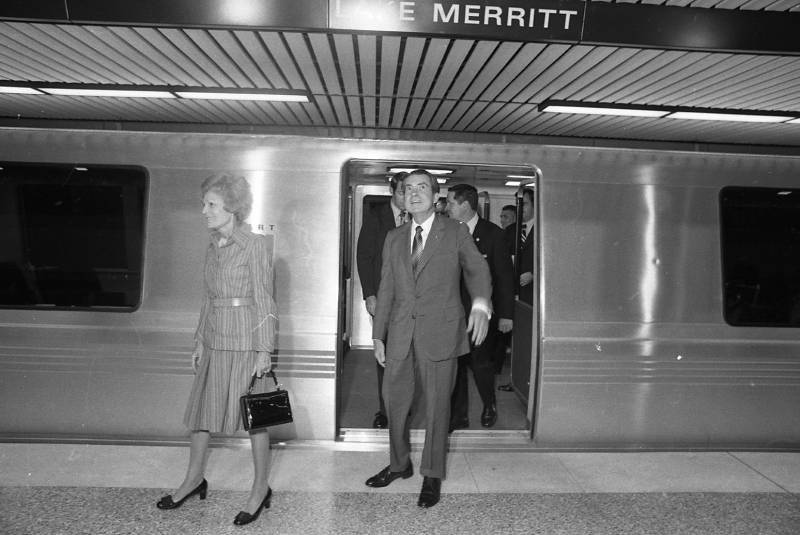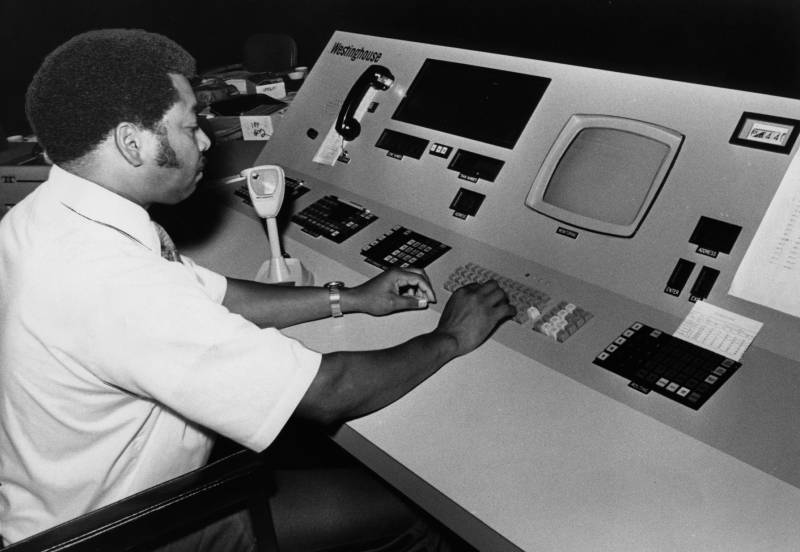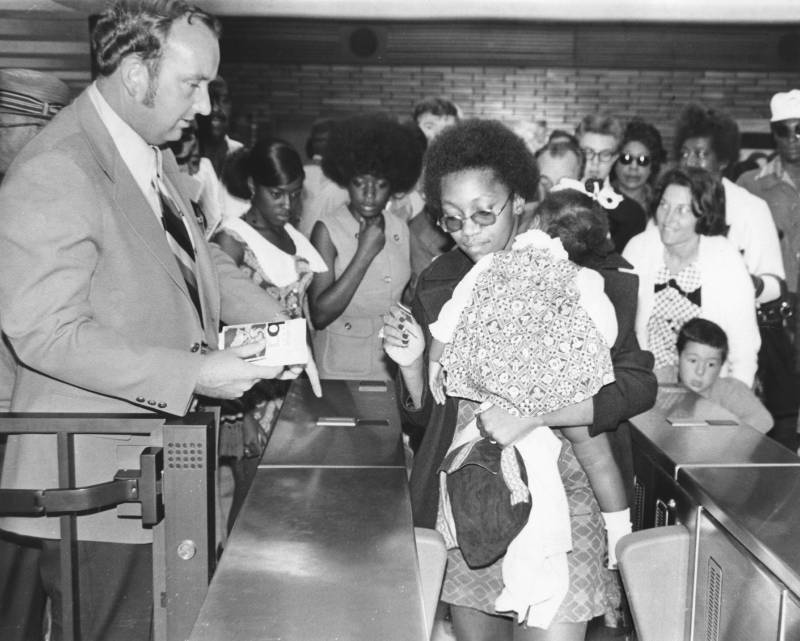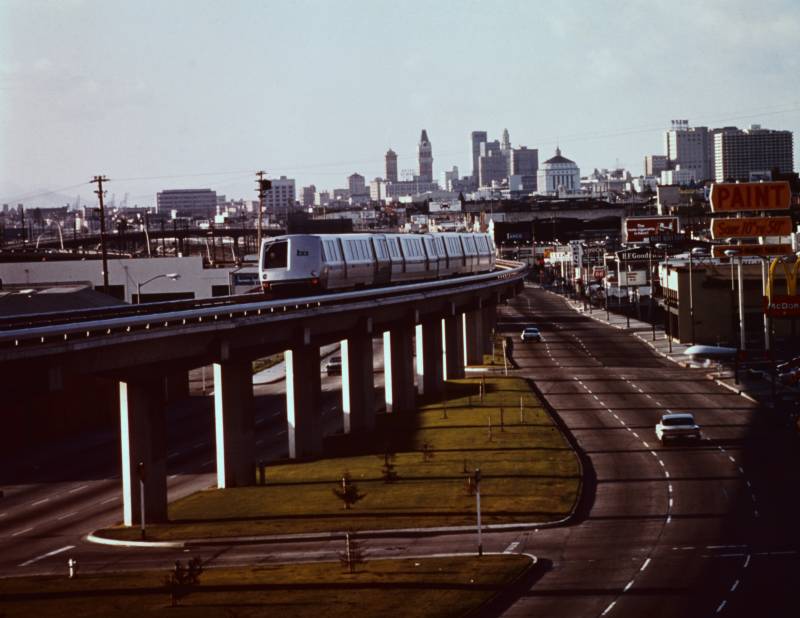As we all know, the 1970s were a brutalist hellscape made of concrete, brown platform shoes, serial killers and—especially in California—LSD hangovers. It was not a cute time to be alive, even in our beloved Bay Area.
Making things infinitely worse in the early-’70s was the relentless construction of a new-fangled transportation system known as Bay Area Rapid Transit. Building started in 1964 and went full tilt in the run-up to BART’s opening day on Sept. 11, 1972. And that construction ran through some major thoroughfares. San Francisco’s Market Street, for example, was decimated for years.
Let’s look at the traffic misery as it escalated:
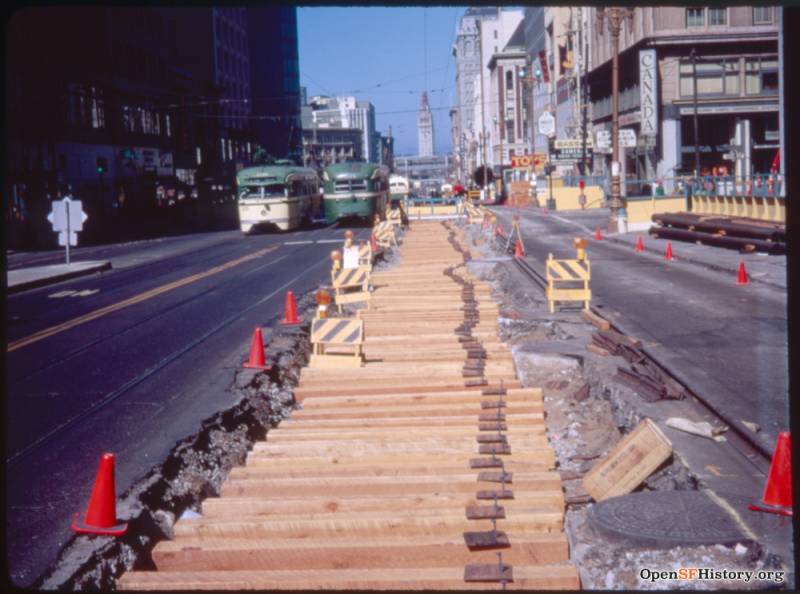
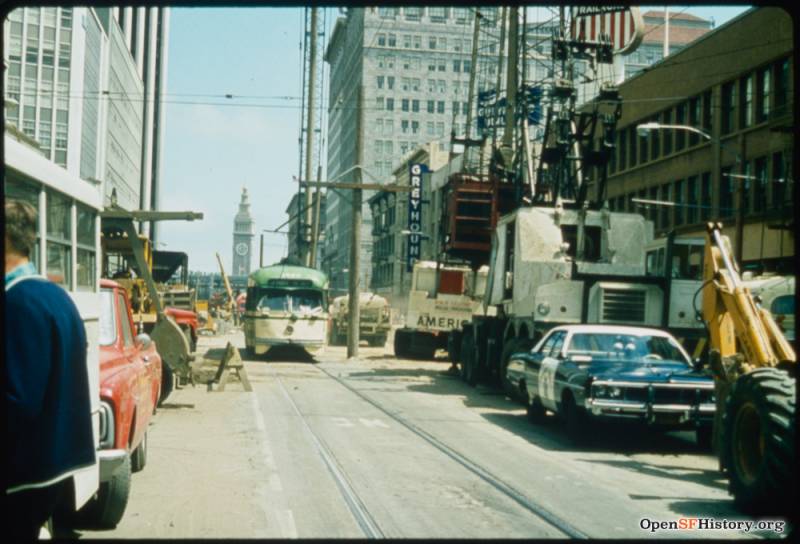
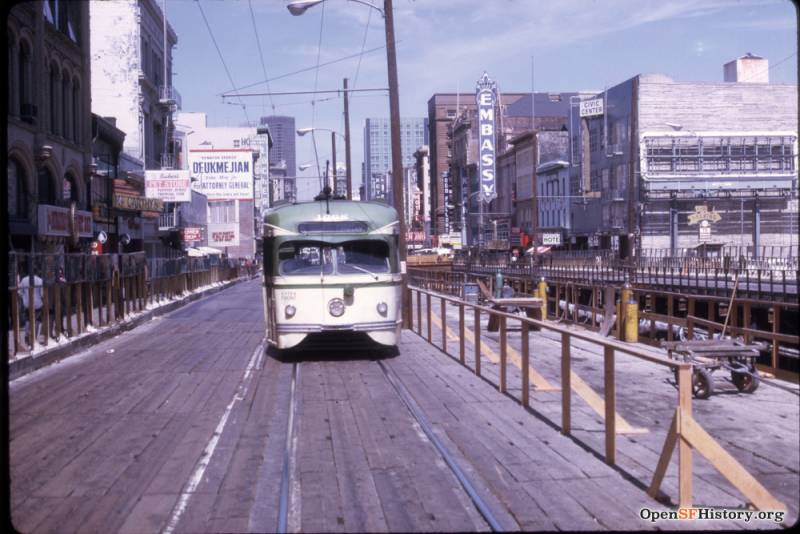
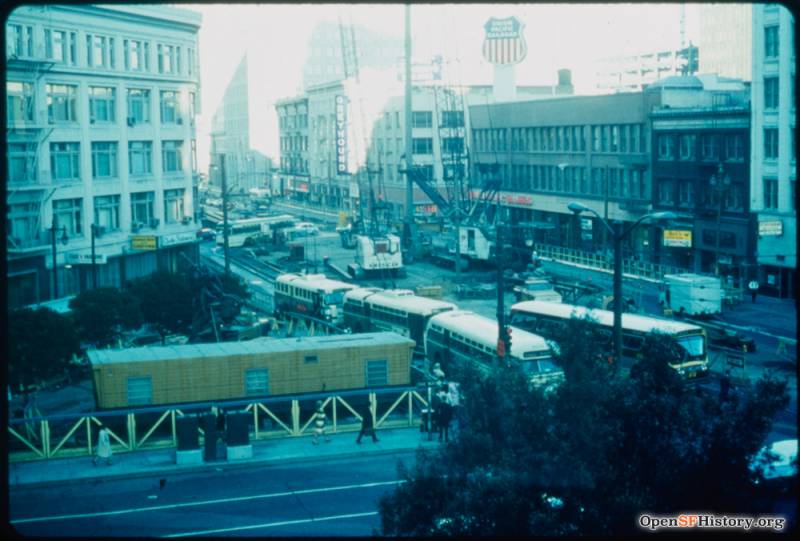
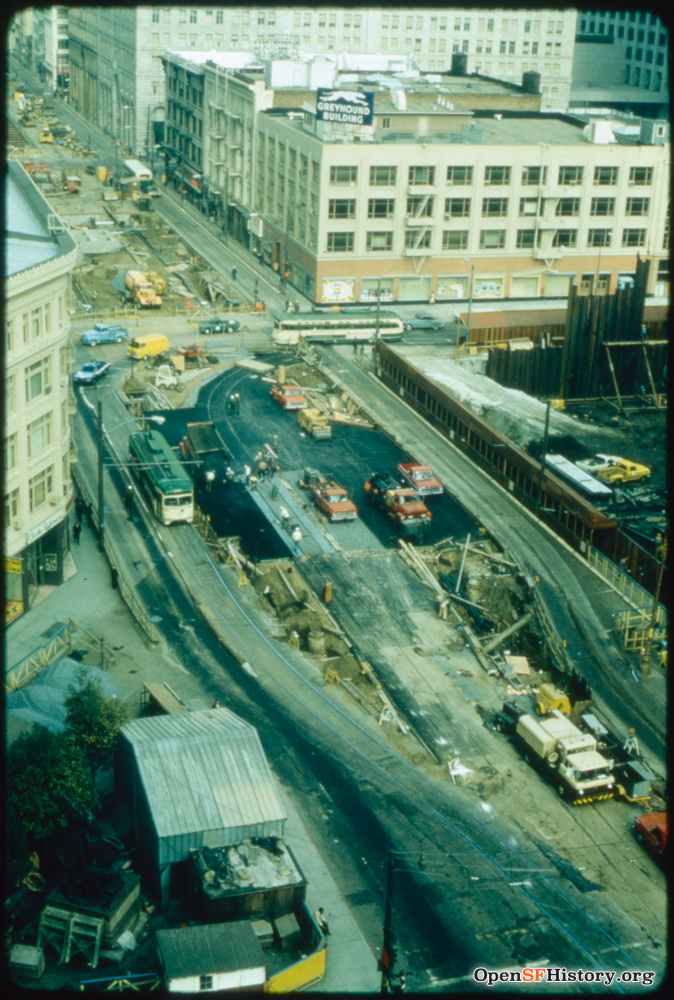
In San Francisco, BART didn’t even start running until 1973, the Transbay Tube between downtown and West Oakland wasn’t ready until ’74, and Embarcadero Station only arrived in ’76. But after so much buildup and chaos, the Bay Area was psyched to see the first sections of BART open in ’72—even though that only included 12 East Bay stations between MacArthur and Fremont.
Despite the fact that they could hop on a train the next day, next week, or, who knows, 50 years down the line, approximately 15,000 people showed up to ride on BART’s first day. They waited for hours on crowded platforms, as trains struggled to keep up with the passenger loads—an issue exacerbated by revelers refusing to get off the trains for hours. The Examiner reported that the very patient humans stuck at stations handled it “with good grace and a sense of history.” Many were apparently wearing pins that read: “Day One. I was there. Sept. 11.” (If you happen to stumble across one of these while thrifting, remember it’s about BART and not, well, you know, the other thing.)
